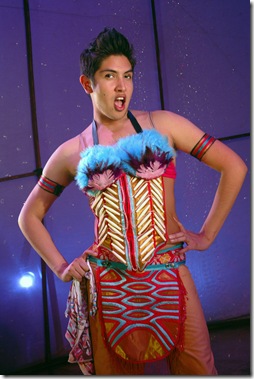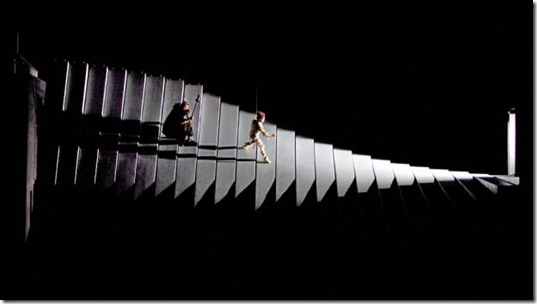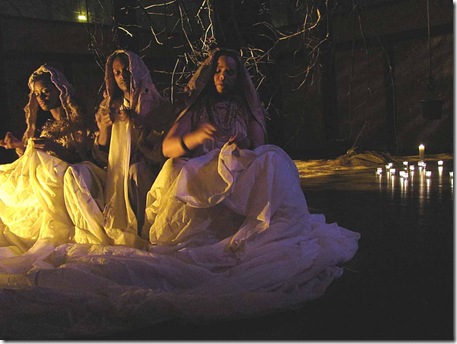Agokwe : the staging makes the show!
Agokwe is written and performed by Waawaaté Fobister who very clearly benefitted from the superlative Buddies in Bad Times production values because the staging is what really makes this show.
Visually it is very strong. Behind this performance lies an excellent team composed of Andy Moro’s striking graphics and projected designs, Erika Iserhoff’s beautiful costumes – especially the raven who stole the show- Lyon Smith’s otherworld sound design and Kimberly Purtell’s magic lighting. Last but certainly not least is the contribution of director and dramaturg Ed Roy who worked on the text and orchestrated the gestures, the movements and the way that Fobister’s story telling unfolds on stage.


